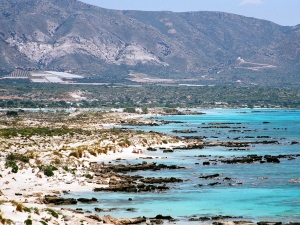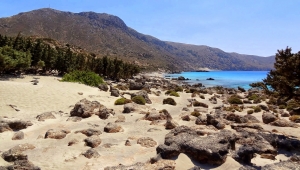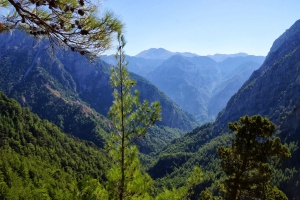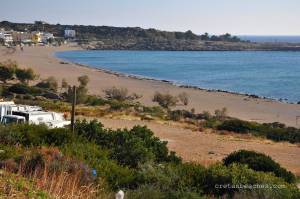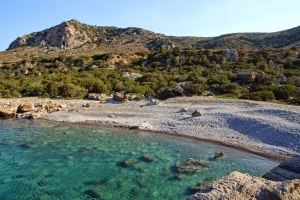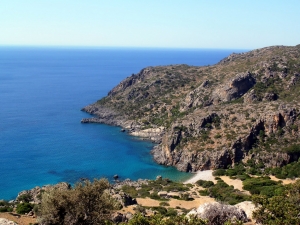Elafonisi is located 76km west of Chania and 5km south of Chrysoskalitisa Monastery, in the southwesternmost point of Crete. Elafonisi is an oblong, which often "breaks" in two parts by water giving the impression of being a separate island.
Kedrodasos (i.e. cedar forest) is an amazing beach, located 76km southwest of Chania and 1km east of the famous Elafonissi lagoon. The beach is filled with juniper trees (mistakenly confused with cedars) and sand dunes, reminding of Lebanese beaches.
The Samaria Gorge is the longest trekking gorge in Europe and also the most famous of all. Thousands of tourists flock here daily in the summer season to walk from the top to the bottom. For many visitors, it is the sole purpose of their visit to Crete. The length of the gorge reaches 18km and takes almost 4-7 hours to hike from Omalos to Agia Roumeli, depending on trekking speed.
The secluded beaches by village Anidri, known as Gialiskari or Dialiskari, are surely some of the most beautiful beaches of Crete. Gialiskari is located 4km east of Paleochora and 80km South of Chania. The beaches are the easternmost beaches of the coasts of Paleochora, having an overall length of 18km.
The beach of Pahia Ammos (i.e. Coarse Sand) is located on the west side of Paleochora, 79km south of Chania. Pahia Ammos has been awarded with a blue flag, which confirms that this is a safe and clean beach.
The Lake of Krios or Viena is located 10km west of Paleochora and 90km south of Chania. The beach is on the part of the European footpath E4 that links Paleochora and Elafonisi.
This amazing hike is about 16km long and takes about 5-6 hours. The trail is clear and well-marked with the typical E4 back-yellow signs. It crosses the archaeological site of Lissos, where you can find water from the local spring. It isn't too difficult but plenty of water, sun protection, and steady shoes are recommended.






















